The French speaker brand Triangle isn’t especially well known here on the left side of the pond, but its products have had a good run on the SoundStage! Network. Back in May 2020, Diego Estan reviewed the Triangle Borea BR03 on SoundStage! Access, a passive two-way standmount speaker. This $559/pair speaker (all prices in USD except where noted) received a Reviewers’ Choice award and was later named a 2020 SoundStage! Network Product of the Year. Exactly three years after Diego’s review was published, I reviewed the Triangle Borea BR03 BT powered loudspeaker system ($799) for SoundStage! Simplifi. The two models have the same driver complement and virtually identical cabinet designs, but the BR03 BT also has a built-in 60Wpc class-D amp with a phono stage, optical and digital inputs, and a Bluetooth receiver. Just wire the system to a source (or pair it with your smartphone) and start listening. Like the Borea BR03 before it, the Borea BR03 BT won a Reviewers’ Choice award.
The new Triangle Capella active speaker system, priced at $2999, is much more ambitious than the budget-priced Borea BR03 BT system. It has more advanced drivers and superior fit and finish: the Boreas have vinyl-clad cabinets; the Capella speakers, luxuriously finished veneered cabinets. In mid-May, I joined a Zoom presentation by Triangle featuring the Capella. By the time the event drew to a close, I knew this was a product I had to get in for review.
Unlike the BR03 BT, which is a powered system—essentially, a passive speaker set where the driving amplifier is built into one of the cabinets—the Triangle Capella is an active speaker system, which has a dedicated amplifier for each frequency range, and where the crossover unit comes first in the signal path and routes each frequency range to the corresponding amplifier.
The Capella is a two-way bass-reflex design with a 6.3″ cellulose-pulp midrange-bass driver crossed over at 3.6kHz to a 1″ horn-loaded magnesium-dome tweeter. Inside each speaker is an electronics module sourced from Platin Audio that contains two 50W class-D amplifiers, one for each driver. Specified frequency response is 42Hz–22kHz (±3dB).
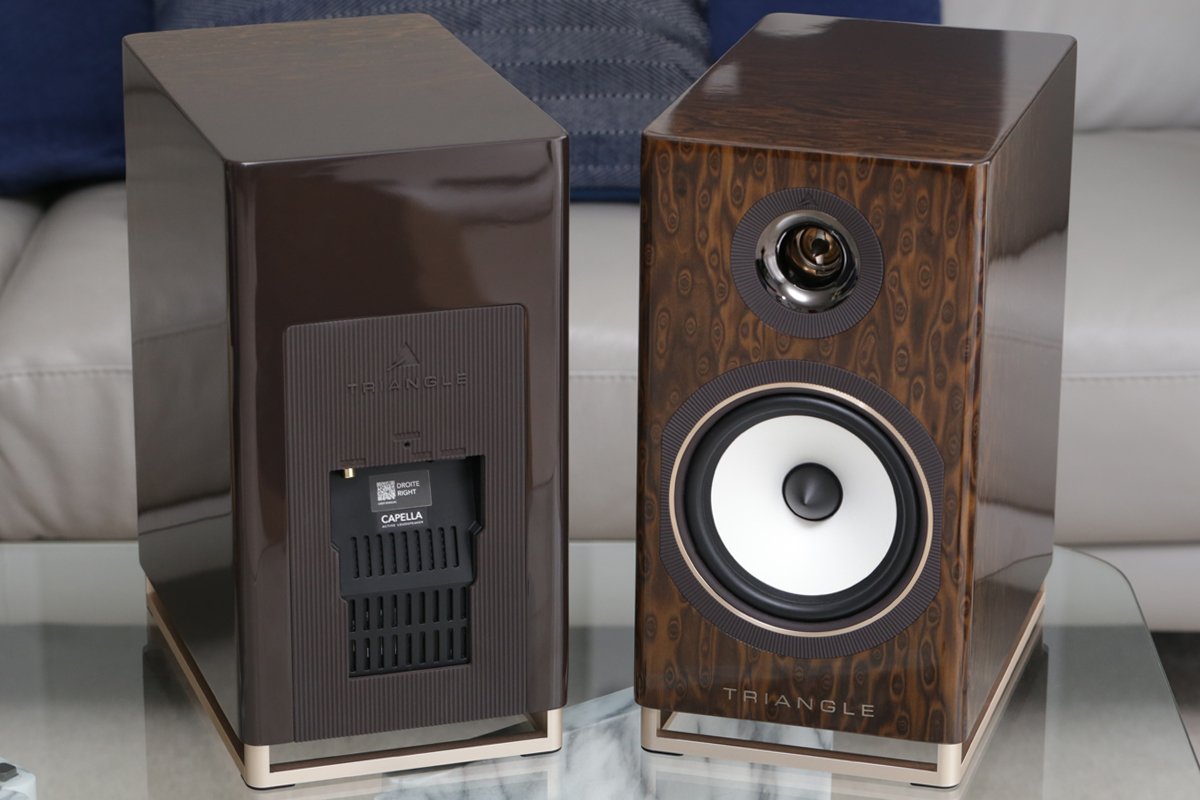
Each Capella speaker has a line-level RCA input that can be connected to a preamplifier, but that’s not how the system is intended to be used. The electronics module in each cabinet includes a WiSA (Wireless Speaker and Audio) radio that can receive 24-bit/96kHz digital audio from a WiSA source component, such as the Platin Stereo Hub. The Stereo Hub, which is included with the Capella system, has built-in Bluetooth and Wi-Fi as well as line-level analog, S/PDIF, USB, and HDMI ARC inputs. Wire the Hub to your source components, or stream to it wirelessly from a personal computer or mobile device, and it will transmit audio by WiSA to the two speakers wherever they are in your house.
The speakers
The French-made Capellas are gorgeous loudspeakers. Each cabinet measures 15″H × 7.9″W × 12.4″D and weighs 18.7 pounds. Four high-gloss finishes are available: Black Star, Astral Blue, Brown Nebula, and Space White. The black, blue, and brown models have a striking burl pattern underneath a thick lacquer finish. My review sample had the Brown Nebula finish.
The speakers are supplied with magnetically attached, color-matched, racetrack-shaped grilles with an eye-catching champagne-gold anodized-aluminum accent piece around the perimeter. The Triangle logo, also in champagne gold, is etched into the front baffle underneath the grille.
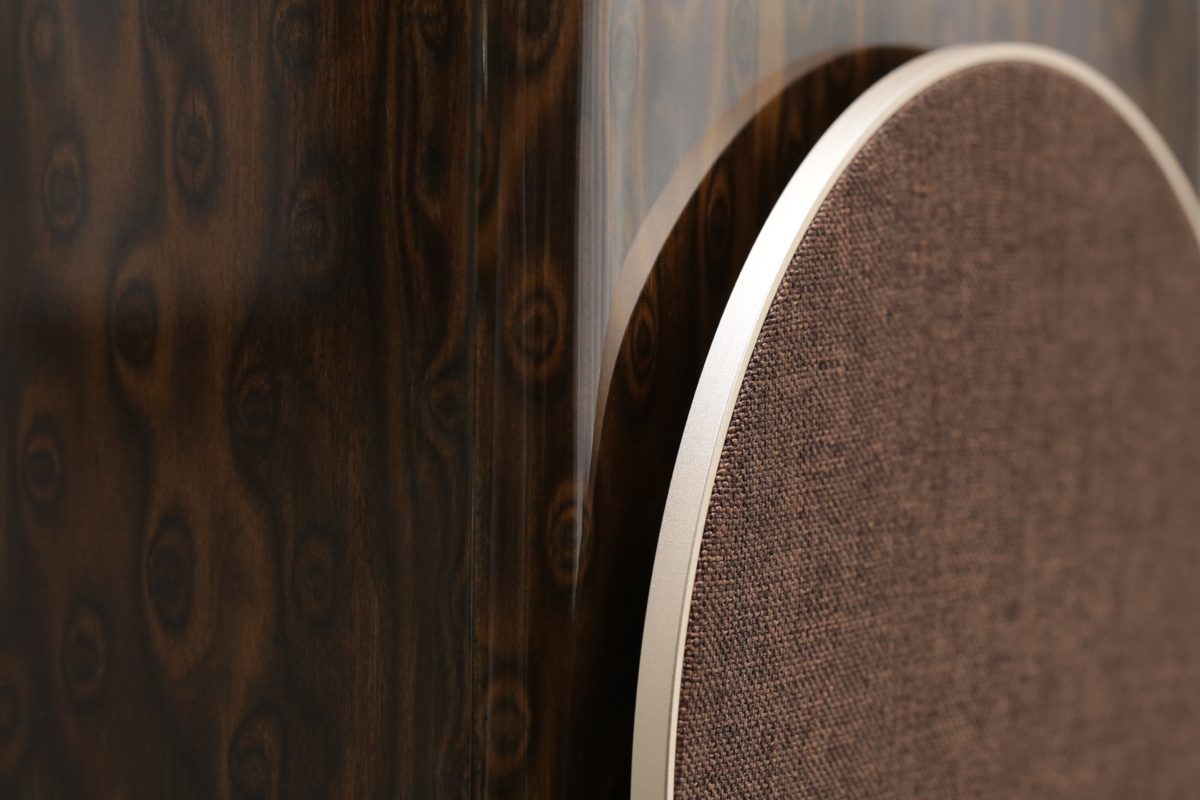
Remove the grille and you’ll see the two drivers. The midrange-bass driver’s white cone contrasts strongly with the black phase plug and surround. A long phase plug on the tweeter is nestled far back in the horn, the apex of its dome aligned with the apex of the woofer cone.
Both drivers are surrounded by a ribbed, rubber-like material. Inside this structure on the midrange-bass driver is a circular champagne-gold accent piece. The side edges of the front baffle are filleted. Combined with the sculpted structure surrounding the two drivers, this minimizes cabinet diffraction, Triangle says. The cabinet is internally braced by a perforated structure that is pushed against the back of the midrange-bass driver and the rear panel.
On a recessed section at the back is the electronics-module interface: the RCA line-level input, on the left, the WiSA pairing button, and the two-prong inlet for the supplied 3m (9.8′) braided power cable, on the right. Above this section, on the enclosure proper, is a status LED.
A champagne-gold aluminum frame at the base of the enclosure elevates it approximately 0.75″, which allows the bass port, on the bottom of the speaker, to vent freely. The downfiring port provides more flexibility in speaker placement, Triangle says. If the speakers are placed on shelves (they’d have to be deep shelves), the port won’t be obstructed by the wall behind.
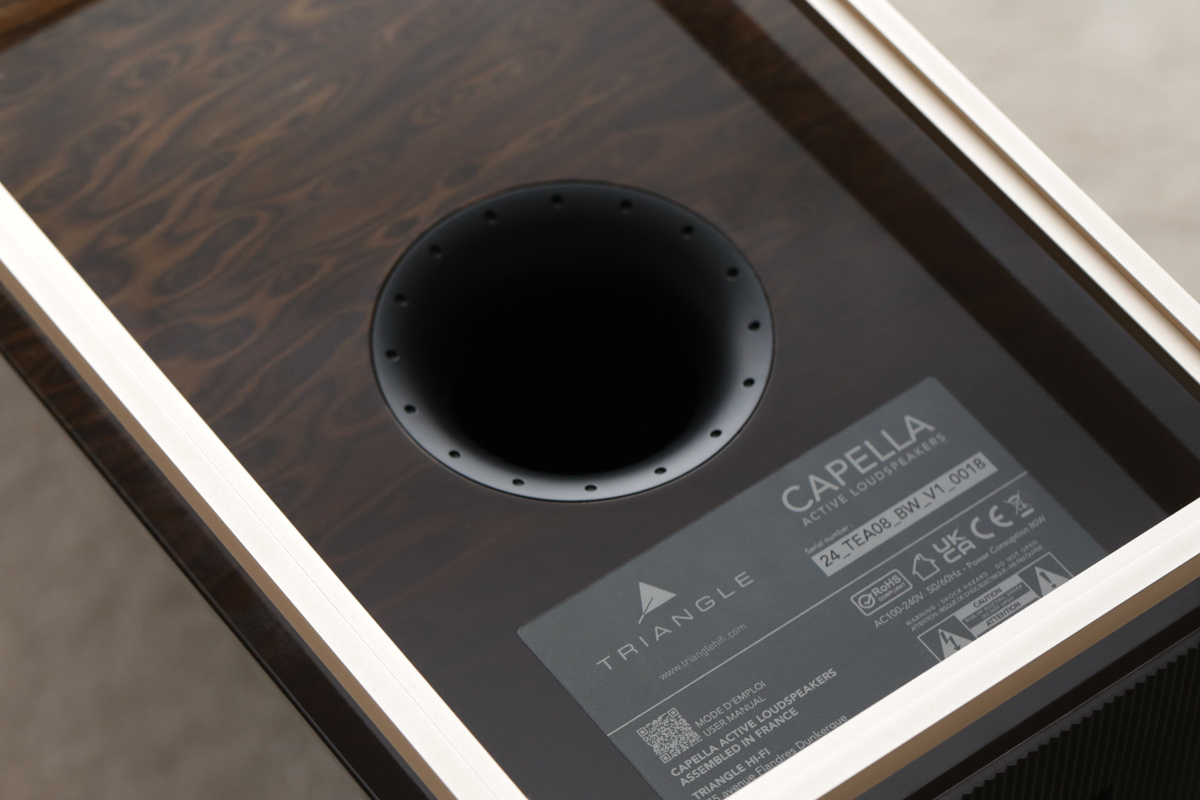
If you’re mounting the speakers on stands, be mindful that while the baseplate of a stand can be smaller than the base of a typical speaker cabinet, it must be at least as large as the base frame of the Capella. The simplest stand choice, one that assures proper support as well as visual match, is the Triangle S05 stand ($399/pair). The S05’s baseplate fits securely into a recessed inner edge at the bottom of the Capella’s base frame. The S05 is available in five colors: dark wood, light gray, black, white, and blue. It incorporates a wiring channel and comes with long plastic bags that can be filled with sand and inserted into cavities inside its column.
The Hub
As I’ve mentioned in previous reviews, Buchardt Audio’s active standmount speakers A500 and Anniversary 10 and System Audio’s active on-wall speakers Silverback 1 and Silverback Legend 7.2 also employ electronics modules sourced from Platin Audio, and they, too, can be purchased with the Stereo Hub.
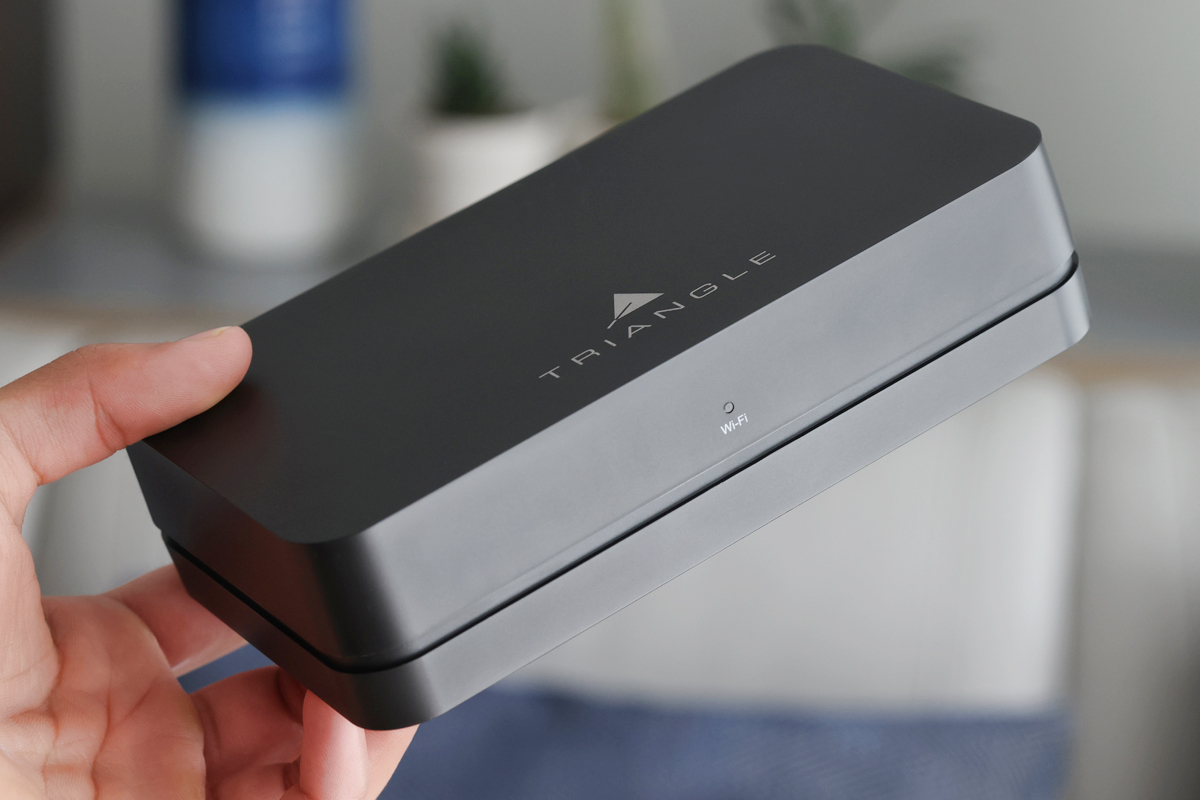
The Stereo Hub sold by those two Danish brands is identical to the one bundled with the Capella system. The companion apps are badged differently, but they are identical otherwise. In my review of the Buchardt A10, I described the Stereo Hub as follows (with a few updates):
Measuring 1.6″H × 6.7″W × 3.9″D, this little black box has three optical (TosLink) and one coaxial (RCA) S/PDIF inputs, a USB-B port for connection to a computer, an HDMI-ARC port for connection to an HDTV, a pair of RCA line-level jacks, and a 3.5mm stereo input. The included aluminum remote control, a solid two-way RF device, has the expected functionality: power on/off, source selection, volume control, mute function, and skip/play/pause functions. A nice, unexpected function is input-specific volume locking.
The Stereo Hub has built-in Wi-Fi (but no ethernet port) and supports a wide range of streaming protocols, including Apple AirPlay 2, Google Chromecast, Spotify Connect, and UPnP/DLNA, and it’s Roon Ready.
Triangle’s implementation of the Stereo Hub is different from that of Buchardt and System Audio. Normally, you start by pairing the Hub with the remote and then with the speakers. When that’s done, you use the Google Home app to connect the Hub to your home network. If you play music at this point, you’ll hear left-channel audio from both speakers. Correct assignment of channels can only be done by the WiSA transmitter, either through its remote control or through the companion app.
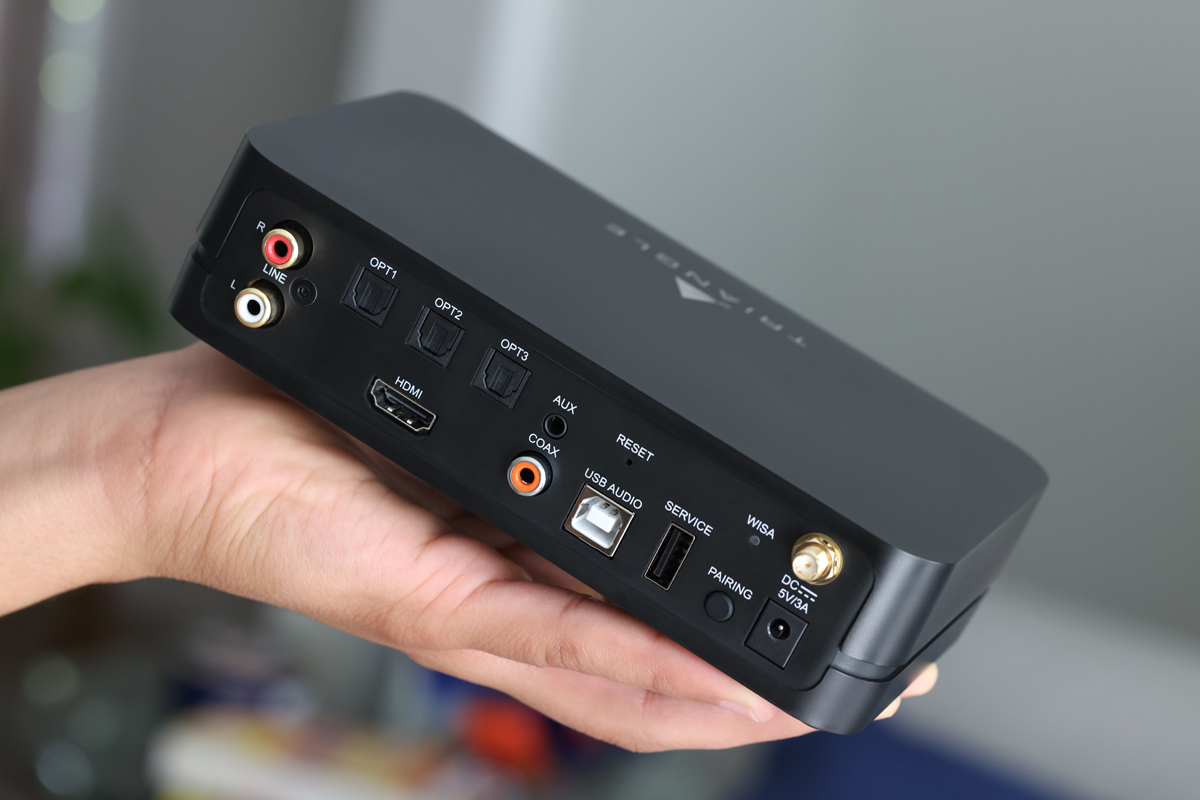
Thankfully, this cumbersome process is not necessary with the Capella system, or at least it shouldn’t be (more on that in the next section), because Triangle pairs the Hub, remote, and Capella speakers at the factory. One speaker is labeled left, the other right. Place the speakers in the desired location, plug them and the Stereo Hub into power outlets, use the Google Home app to connect the Hub to your home network, and you’re ready to play music; channels will be correctly assigned. I have now set up the Stereo Hub with six different systems (two from Buchardt, four from SA); having it set up for the Capella by the factory is most welcome.
Like the Buchardt and System Audio apps, the Capella app has automatic room-correction capability. If you’re an Android user, you’ll need the Zen wireless microphone (available as an accessory for $199) to perform calibration. If you’re on iOS, you can also use the mike built into your iPhone. To calibrate Room EQ, you walk around the room for one minute with your smart device or Zen mike in hand while the app plays white noise through the speakers. The app analyzes the sound and creates a correction curve for the Hub’s DSP. You can enable and disable Room EQ in the Capella app.
The app’s EQ function offers three presets. Each preset can include a combination of parametric EQ, low- and high-shelving filters, and first- and second-order high-pass filters. The EQ function operates on both channels—you cannot apply different EQ curves to each channel separately.
Software and setup
Along with the Capella speakers and Stereo Hub, Triangle supplied a set of S05 stands, in the dark-wood finish, and a Zen microphone. A poster-size quick-start guide accompanied the speakers. A full manual is available on Triangle’s website.
Believing that the Hub, remote, and speakers had all been paired at the factory, I expected to be able to simply assemble the stands, connect the Hub to my home network, and start playing music. It didn’t work out that way.
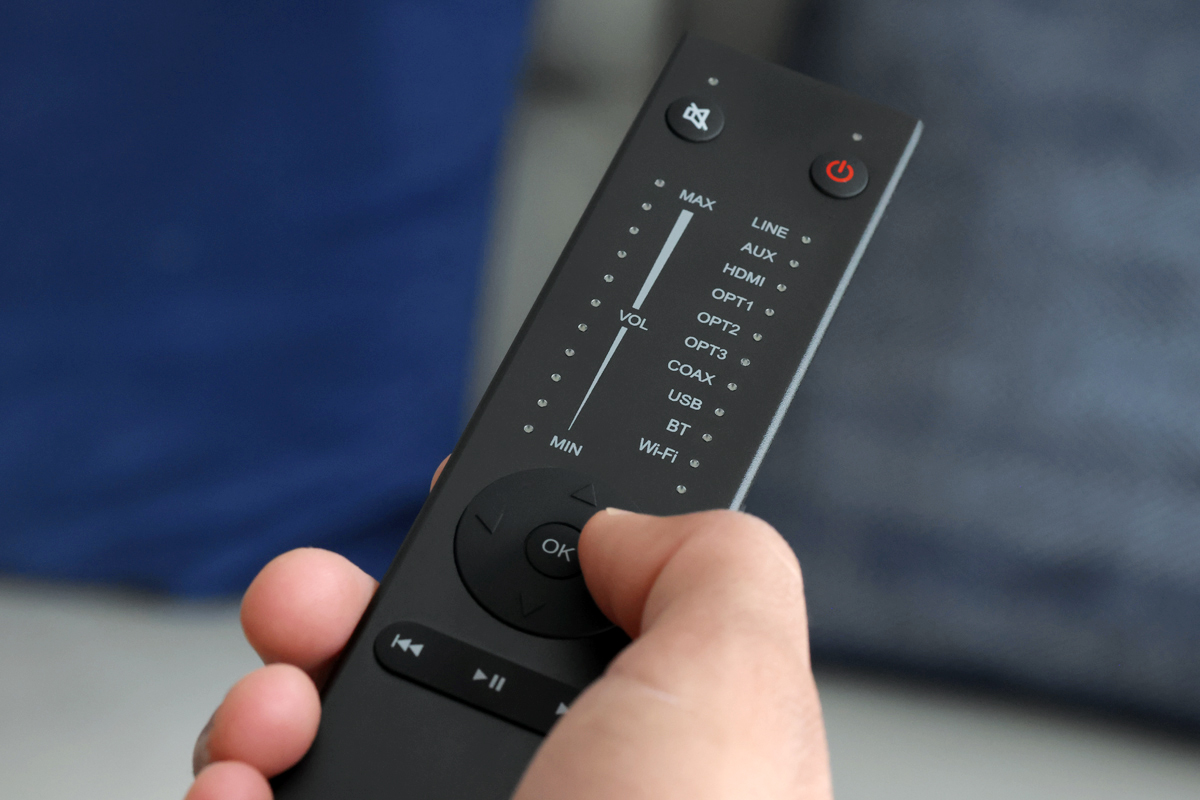
On my iPhone 14, after I clicked the Add button in the Devices menu of the Google Home app, I was prompted, “Stereo Hub found. Would you like to set up Capella?” After confirming that I did, the screen displayed, “Connecting to Stereo Hub . . .” But a few minutes later it read, “Connection failed.” The only option then was to exit setup.
On my Google Pixel 4a 5G phone, after I clicked the Add button, I got a screen that said “Stereo Hub found. It needs to be activated before setup.” The screen prompted me to go to the Help Center, where I was advised to download and run the Device Utility app. But the Device Utility app could not find and add the Stereo Hub to Google Home. Back to square one.
It turns out there was an oopsie on Triangle’s part. They had run the system for several hours at the factory so that the speakers would be well broken in before they landed on my doorstep. The Hub had been connected to Triangle’s network and hadn’t been reset before it was shipped.
Triangle advised me to do a factory reset of the speakers and Hub, followed by a fresh installation. I had to go through the same rigmarole I had gone through with the Buchardt and System Audio systems, including reassigning channels to the proper speakers. Triangle anticipates that some users may have to do a fresh installation—if they change their network, for instance—and has provided a guide to this process on their website.
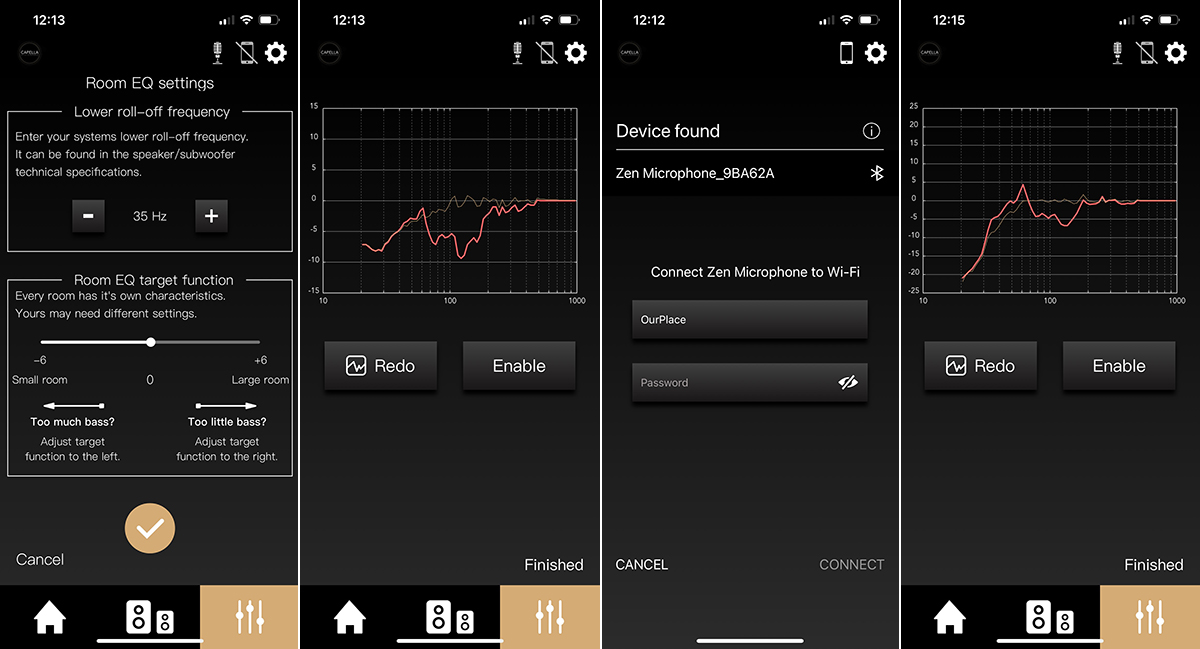
I’ve had mixed results using the Stereo Hub’s Room EQ feature with other systems and was curious to see how well it would work with the Capella. I carried out the calibration routine using my iPhone 14 and got a result that looked remarkably similar to the one I got with the Buchardt A10. Would it be much different if I used the Zen microphone? I powered up the mike, and the Capella app detected it and guided me through the process of connecting it to my home network. With the mike able to communicate with the app, I then repeated the Room EQ configuration process.
The result was quite different. The second screenshot from the left, above, shows the result I got using the iPhone’s microphone; the one on the right, using the Zen mike. The latter result, I noticed, was closer to the results I had had with Dirac Live calibration on components in my room. I used the Room EQ settings I made with the Zen microphone during some of my listening sessions, as outlined in the next section.
Listening
I placed the Capella speakers, mounted on the S05 stands, on either side of the fireplace in my living room, toed in slightly. My listening position was by the opposite wall, 7′ from the baffles. The speakers were 7′ apart, their backs 12″ from the front wall. I began my audition with the EQ turned off.
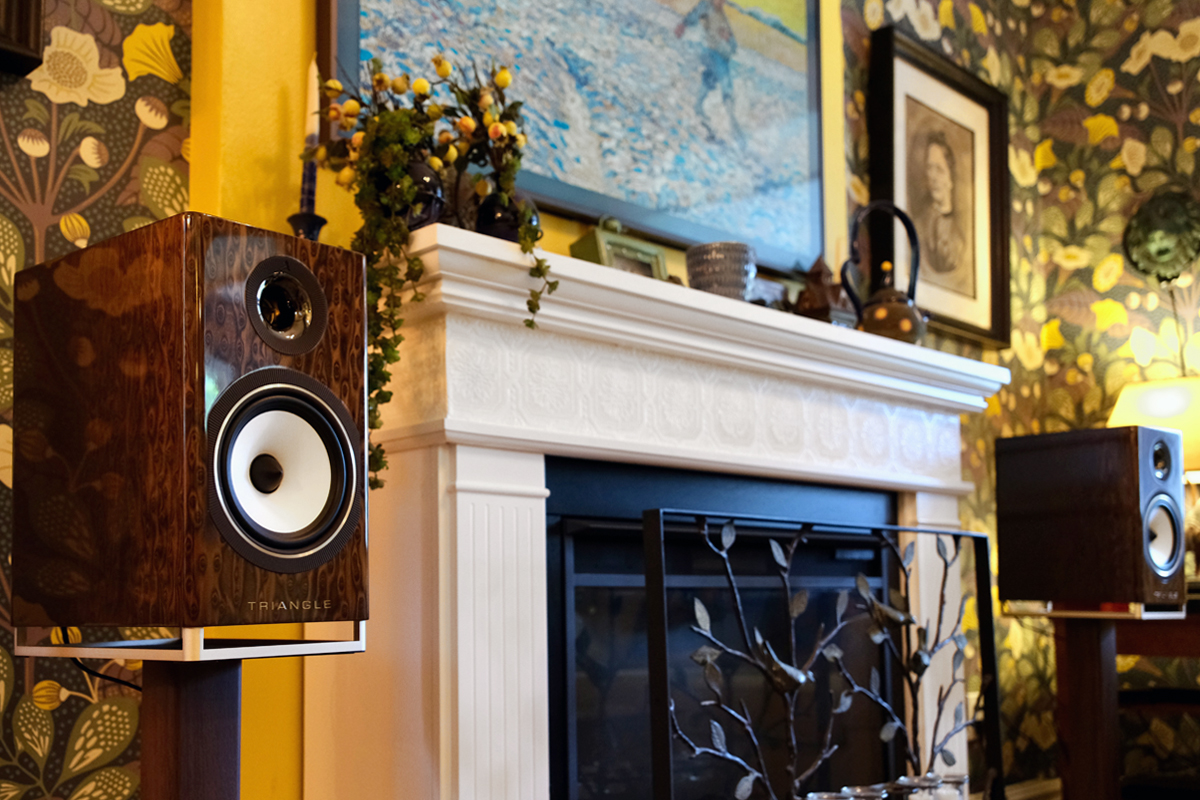
I streamed to the Stereo Hub from the Qobuz app on my Google Pixel 4a 5G smartphone via Chromecast and from the Apple Music app on my iPhone 14 via AirPlay 2. Except for a short gap between each song when I streamed from the Google phone (Chromecast does not support gapless playback), everything worked seamlessly. For my critical listening, I streamed music via Roon from the Roon Nucleus One server in my second-floor home office.
Solo piano, I have found, is a very useful genre for evaluating a loudspeaker’s dynamic capabilities, tonal balance, and frequency range. What could be more revealing than solo piano? How about two pianos? With that in mind, I cued up one of my favorite recordings of 2024, Philip Glass: Cocteau Trilogy (24-bit/48kHz FLAC, Deutsche Grammophon / Qobuz), a set of transcriptions for two pianos of music by Philip Glass, played by Katia and Marielle Labèque. The pieces are excerpted from three of Glass’s operas: Orphée, La Belle et La Bête, and Les Enfant Terribles, all based on movies by the French director Jean Cocteau. I experimented with Room EQ for a while when I began listening to this album, but since I heard no improvement, I continued my listening with the feature disabled.
During the rollicking first movement of Orphée, “Le café,” attack transients of the big chords were not quite as sharp as I’ve heard them on other systems, and dynamics seemed a tad compressed. A redeeming virtue, however, was the delicious harmonic richness of the two pianos. On some systems, the two Steinways can sound a bit clangy.
The tender movements in this work revealed the outstanding dynamic capabilities of these beautiful French speakers. On “Orphée et la Princesse,” I loved the way they rendered the Labèque sisters’ exquisite legato phrasing. I could sense the exact amount of force the pianists were applying to the keys. I was equally wowed by the Capella’s rendering of the skipping phrases in “Le retour chez Orphée.” I’ve heard the attack transients of those notes sharper on other systems, but I have rarely heard them segue so lusciously into the reverberation of the pianos’ soundboards and thence into the recording venue.
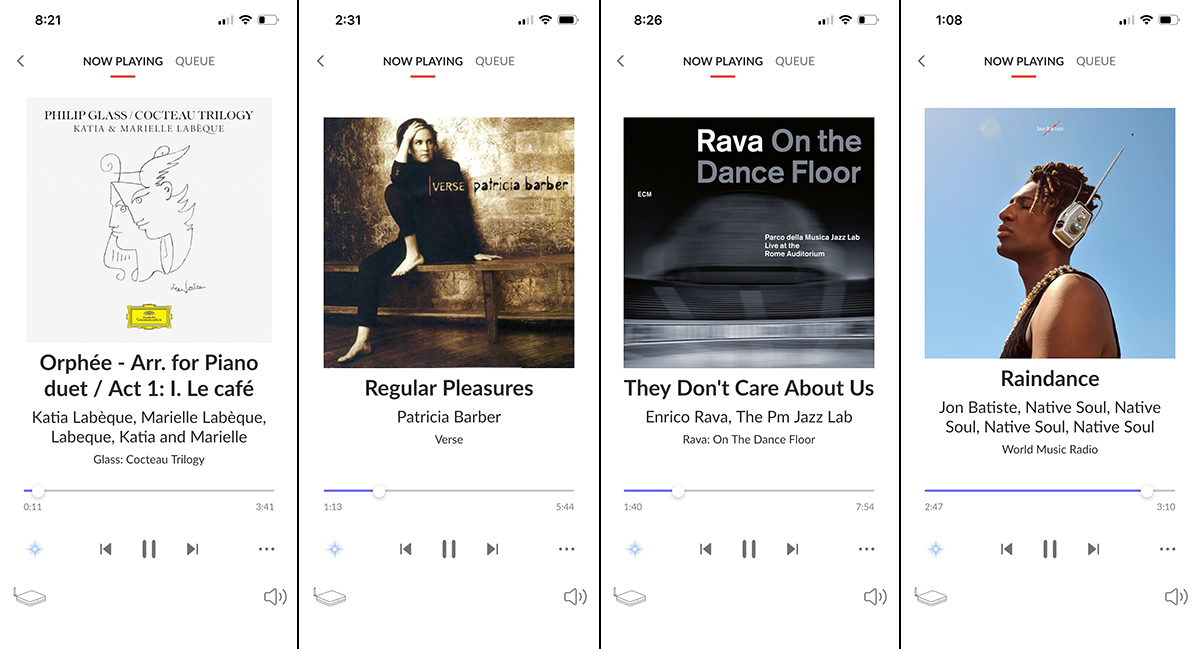
Throughout these pieces, low notes and chords were rich and powerful, surprisingly so for a pair of 6.5″ standmount speakers. The grandeur of the two Steinways was imbued in their sound. Octave-to-octave balance was admirably consistent. I heard no jarring peaks at any time.
One of my favorite tracks for assessing bass performance is “Regular Pleasures,” from Patricia Barber’s 2002 album Verse (16/44.1 FLAC, Verve Records / Qobuz). Throughout the song, Michael Arnopol plays a riff on double bass while Joey Baron keeps time on the drums, punctuating the end of each bar with a huge bass drum thwack. The leading edges of those thwacks didn’t hit quite as hard as I would have liked, but the ensuing resonance of the drum body was big and powerful and well controlled. That resonating drum was not as deep and powerful as you’d get from a pair of floorstanders, but considering it was reproduced by a pair of 6.5″ standmounts, it was mighty impressive.
I was equally impressed by Baron’s snare taps. I could clearly make out the instant the stick made first contact and then the attendant vibration of the snare on the bottom. Those snare taps had body. They did not sound rattly. Cymbal taps were brilliantly, but not splashily, metallic. With Arnopol’s double bass, attack transients weren’t perfectly crisp, but the warm, woody resonance was completely satisfying—big, robust, powerful.
What stood out most for me was the way these speakers rendered Barber’s voice. It sounded rich, full-bodied, and natural, with no bothersome sibilance.
While lateral imaging was broad, front-to-back layering was shallow. In the bridge, Dave Douglas’s muted trumpet appeared on the same plane as the other instruments.
Room EQ brought a subtle but noticeable improvement to this track. Baron’s bass drum thwacks were better defined. Some overhang that had escaped my notice when Room EQ was disabled was now noticeably absent. Arnopol’s double bass riffs sounded a little fuller with Room EQ enabled.
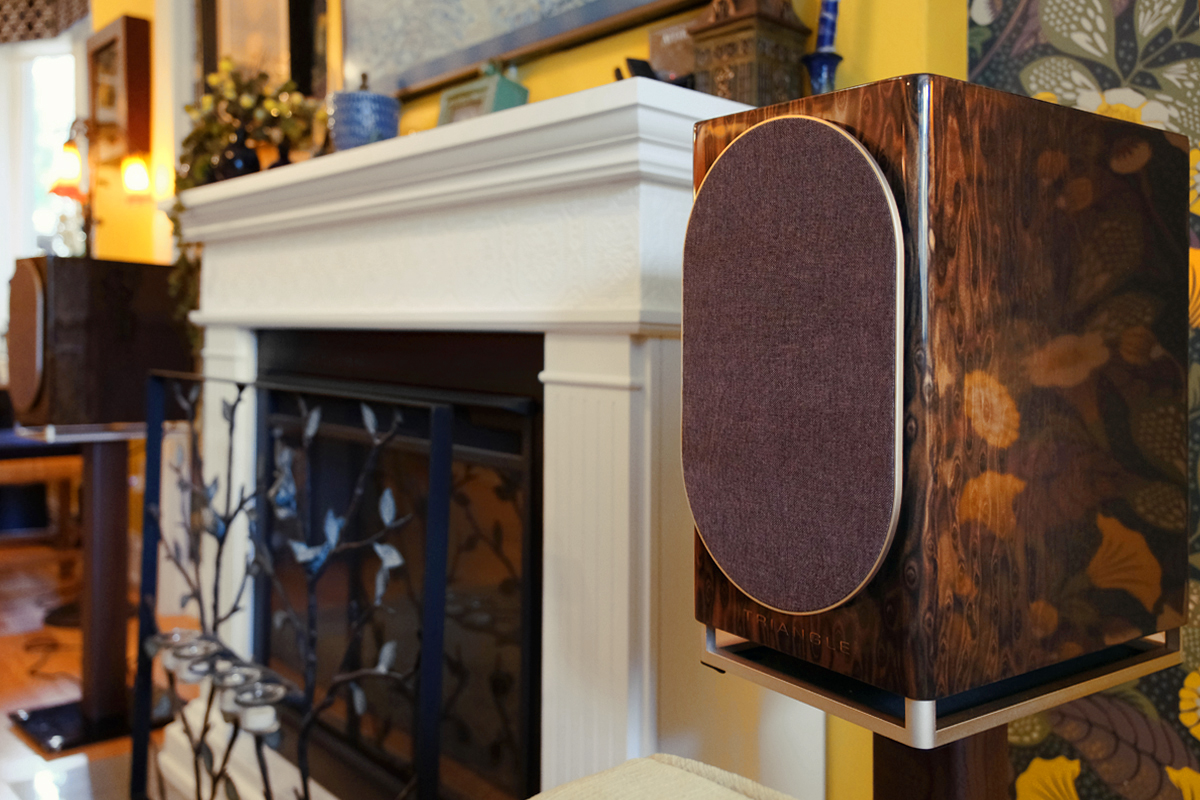
For something more rambunctious, I cued up “They Don’t Care About Us,” from On the Dance Floor, a collection of covers of Michael Jackson hits by the Italian trumpeter Enrico Rava and the Parco della Musica Jazz Lab (24/48 FLAC, ECM Records / Qobuz). The track begins with cartoony effects scattered all over the soundstage: clocklike ticking sounds in the rear, tinkly piano notes in the front right, wah-wah phrases played by a muted trumpet and then a muted trombone, something that sounds like a slide whistle out front, a tuba in the rear. All these sounds appeared in well-defined positions all over the soundstage: between, behind, and above the speakers.
As the track gathered momentum and instrumental parts began to fill in and build up, I couldn’t help but admire the convincing timbre of the instruments—clarinet, tuba, alto and tenor saxes, and trombone all sounded true to life. In the high-energy middle section, Rava’s trumpet had gorgeous golden tone. But it wasn’t just the timbre that wowed me; it was also the expressiveness, the way every musical shade and emotional nuance of his playing was laid bare.
Just before the five-minute mark, chaos erupts, and the track devolves into a wall of sound. The Capella system handed this wild section with aplomb. The presentation was dense, as it should be, but not congested. Individual instruments were rendered distinctly and clearly against this intense sonic background.
On this track, Room EQ affected mainly low-pitched instruments. The tuba and electric bass sounded just a little bigger and fatter with EQ enabled.
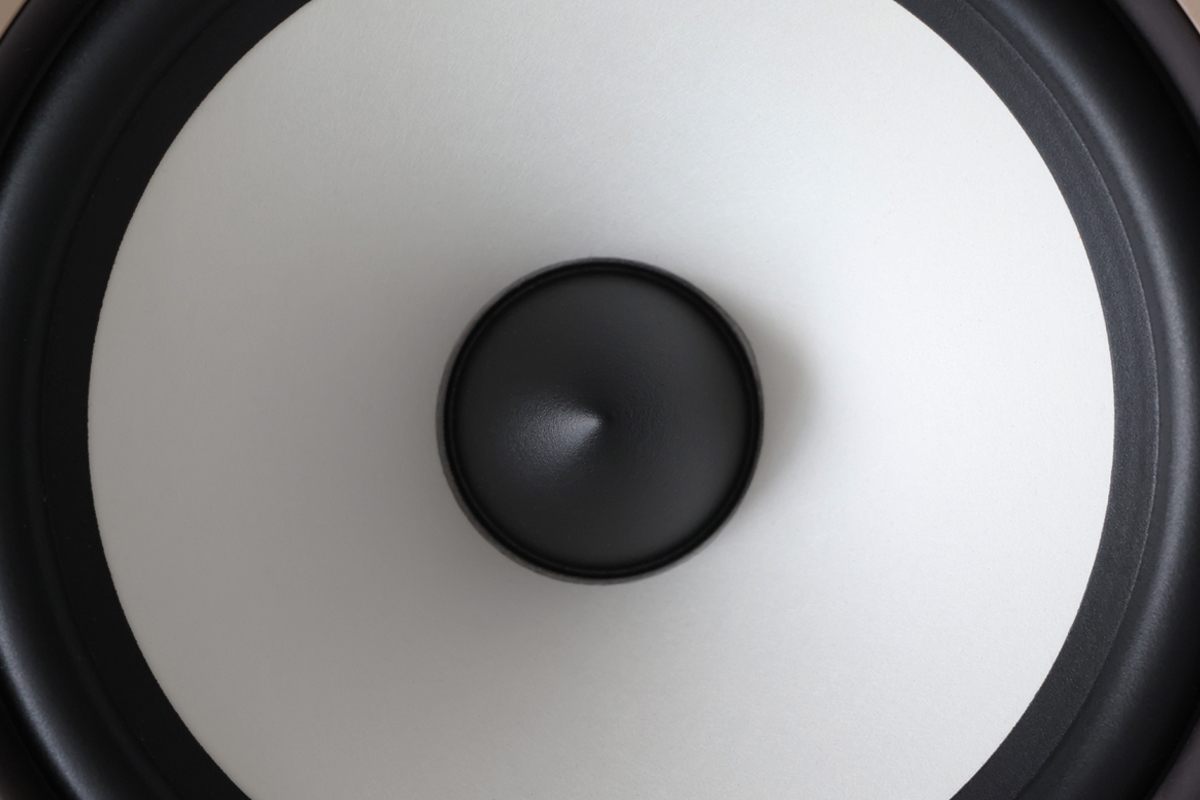
Staying in party mode, I cued up “Raindance,” from Jon Batiste’s 2023 concept album World Music Radio (24/48 FLAC, Verve Records / Qobuz). Percussive clacking effects appeared all over the rear of the soundstage, about three feet above the speakers. The hip-hop drums and big synth notes just pounded, making the presentation irresistibly propulsive. Batiste’s voice, natural and authentic in timbre, was locked in place at center stage slightly above the speakers while background vocals appeared magically to the left and right. Every word was intelligible, never excessive in sibilance. In the tender bridge, the Mellotron swirled all across the front of the soundstage. The whole room was alive with music.
As with the bass drum thwacks on “Regular Pleasures,” the big hip-hop drumbeats and synth notes were less prominent with Room EQ enabled but better defined. The improvement was more dramatic on “Raindance” than it was on the Barber song.
Comparison
I compared the Capella system with Buchardt Audio’s Anniversary 10 (€4100–€4350/system, depending on finish, including Stereo Hub, worldwide shipping, and all duties and taxes). I placed the A10s on 28″ Monoprice Monolith stands.
The A10 is a two-way sealed design, employing a 6.5″ midrange-bass driver powered by a 150W amplifier and a 0.74″ waveguided aluminum-dome tweeter powered by a 50W amp. The Capella and A10 have comparable fit and finish but very different aesthetics. The Buchardt speakers, with matte finishes and solid-hardwood cabinets, have a minimalist Scandinavian look; the Triangles, a more urbane, luxurious look.
An unusual feature of Buchardt’s active speakers is customization of their built-in DSP by installation of different configuration files, which Buchardt calls “Mastertunings.” For this comparison, I used the default Theoretical Flat Mastertuning. I disabled Room EQ in both systems and matched their levels using pink noise and a handheld sound-pressure meter.

On the Cocteau Trilogy album, the two-piano arrangement of “Le Café,” from Philip Glass’s opera Orphée, had noticeably crisper staccato with the Buchardt speakers. On “Oprhée et la Princesse,” the pianists’ exquisite legato phrasing was arresting in its fluidity.
Jon Batiste’s voice on “Raindance” also sounded a little crisper with the Buchardt system, and his enunciation was a tad clearer. But it was a little fuller bodied with the Triangle setup. The percussive clacking effects sounded faster and more dramatic with the Buchardt and were imaged with sharper distinction on a taller, deeper soundstage. Attack transients of the bass drum, bass guitar, and synth notes were better controlled with the Buchardts, though no less impactful.
With both tracks, I preferred the sound of the Danish system by a slight margin, which isn’t surprising given that it is roughly 50% more expensive.
Conclusion
I really enjoyed my time with Triangle’s Capella active speaker system. I loved the refined looks of the speakers, their outstanding fit and finish, and their wonderful sound. For a European-made speaker system of such high quality, it is well priced.
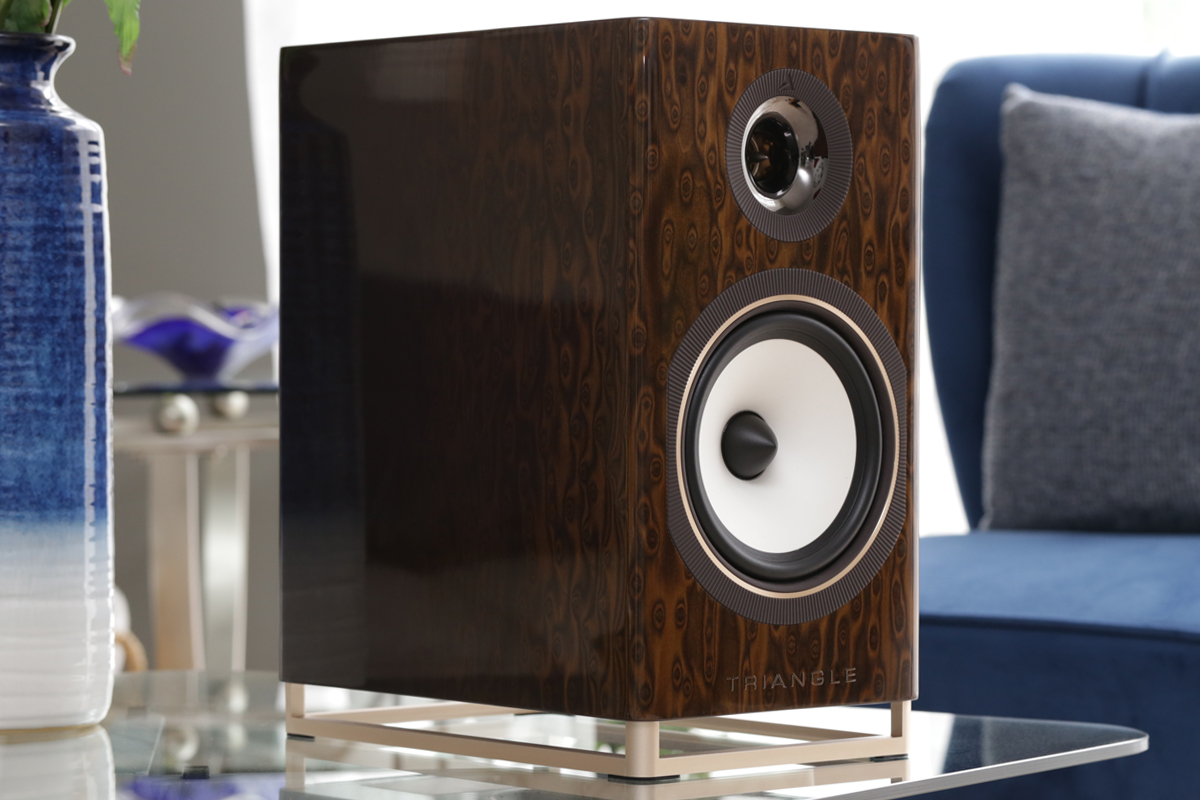
While exhibiting mild dynamic compression at high volume levels, the Capella speakers could play quite loud without distress. And although staccato notes were sometimes softer than I’d have liked, the harmonic richness of voices and instruments more than made up for that: both male and female vocals had substance and body; instrumental timbres were always convincing. The Capella’s ability to reveal subtleties in musicians’ touch and technique was most impressive. In short, this is a wonderful system, one that merits a solid recommendation.
. . . Gordon Brockhouse
Associated Equipment
- Active speakers: Buchardt Audio Anniversary 10 and Stereo Hub.
- Speaker stands: Triangle S05, Monoprice Monolith.
- Music server: Roon Labs Nucleus One.
- Control devices: Apple iPhone 14, Google Pixel 4a 5G, Apple MacBook Pro (M3).
- Network: Google Wifi four-node mesh network.
Triangle Capella Active Loudspeakers and Stereo Hub
Price: $2999.
Warranty: One year, parts and labor; five years on passive speakers, three years on active electronics with registration.
Triangle Hi-Fi
475 avenue Flandres Dunkerque 1940
02200 Villeneuve-Saint-Germain
France
Phone: +33 (0)3 65 87 03 59
Website:www.trianglehifi.com






